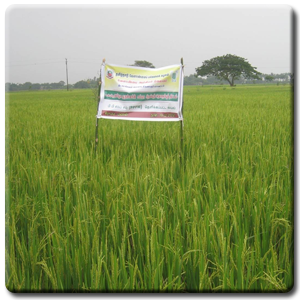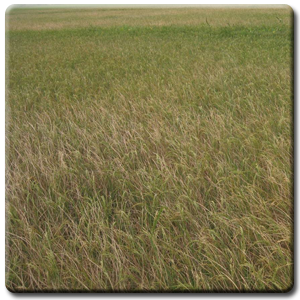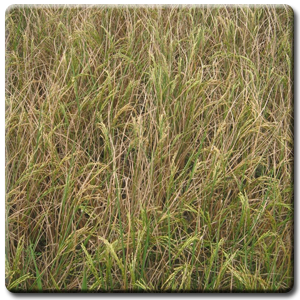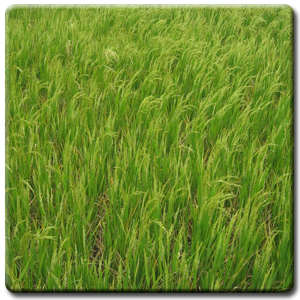TNAU Agritech Portal :: PINK PIGMENTED FACULTATIVE METHYLOTROPS (PPFM)
|
| Bacteria often live in environments containing diverse substrates. One of such habitat is the phyllosphere, where facultative methylotrophic bacteria are found to be ubiquitous and abundant . These methylotrophic bacteria belong to the genus Methylobacterium and are known to metabolize methanol but also a limited number of alternative carbon substrates, such as organic acids and alcohols. Plant leaf surfaces release diverse carbon sources, mainly sugars and organic acids, at low amounts (µM range), and these sources are heterogeneously located and result of leaching through the cuticle. In addition to these substrates, volatile carbon substrates, particularly the plant cell wall metabolism byproduct methanol, are released via the stomata. Methanol emission peaks in the morning, when the stomata first open. |
 |
There is evidence that methanol is consumed by Methylobacterium and contributes to the epiphytic fitness of the organism. However, in addition to the peak of methanol emission in the morning, Methylobacterium should adapt its metabolism to use additional carbon sources during the rest of the day when methanol emission is low or during the night when stomata are closed and methanol is consequently no longer available.
PPFMs are aerobic, Gram-negative bacteria and, although they are able to grow on a wide range of multicarbon substrates, they are characterized by the capability to grow on one-carbon compounds such as formate, formaldehyde, and methanol as their sole carbon and energy source. They are easily isolated on a methanol based mineral medium. Recently published data suggest that the degree of the plant–Methylobacterium association varies from strong, or symbiotic to loose, or epiphytic, a range that also includes the intermediate endophytic association. However, the overall nature of their relationship with plants is as yet poorly understood, and the biological significance of these bacterial species is still unknown. The use of leaf impressions on a methanol-agar medium has demonstrated the presence of pink-pigmented facultative methylotrophs in over 70 plant species.
These PPFMs are especially abundant on leaves of field-grown crops averagedabout106 cfu of PPFMs per leaflet, and typically >80% of the viable bacteria recovered from leaves were PPFMs. The occurrence of soil methylotrophs is probably related to the abundance of plant lignin and pectin in soils; these polymers are major potential sources of methanol. |
The high diversity of species in the genus Methylobacterium is still not fully known and their vast distribution in natural habitat raises questions of whether the species are habitat specific or they play similar ecological role in different environments. To address these questions, a better understanding of the distribution of Methylobacterium strains between and within different ecosystems and analysis of Methylobacterium community compositions and dynamics in natural habitats are necessary. One of the best-characterized methylotrophs, both genetically and physiologically, is the methanol utilizing organism Methylobacterium extorquens AM1. |
| The genus Methylobacterium |
|
 |
 |
 |
 |
- Aerobic, Gram-negative bacteria, Abundant cytokinin synthesizing bacteria in leaf
- Methyl” -CH3, “troph” -growth
- Methylotrophy - growth on one-carbon compounds such
as methanol (CH3OH)
- Bacterial genus – Methylobacterium,
a-proteobacteria
- Ability to oxidize methanol
|
| Strictly aerobic, Gram-negative, rod-shaped |
Potentially dominate the phyllosphere bacterial population and the association varies from endophytic and epiphytic.
Methylobacterium - Plant Interaction
- Referred as Pink-Pigmented Facultative Methylotrophs (PPFM)
- Dominate the phyllosphere bacterial population
- Endophytic association, to loose, as exemplified by epiphytic association on plant surfaces
- Plant hormones, such as cytokinins and indole acetic acid
|
| Beneficial effect on plant |
- Fasten seed germination and seedling growth
- Accelerate vegetative growth
- Increase leaf area index and chlorophyll content
- Earliness in flowering, fruit set and maturation
- Improves fruit quality, color and seed weight
- Yield increase by 10%
- Mitigate drought
|
| Method of Application |
- Seed treatment – Imbibe seed in 1.0 % volume for 5-10min (depending on seed)
- Foliar Spray of 1% PPFM
- Spray during morning or evening
- Recommended for all crops
- Spray at critical stage of crop growth (or) 30days interval
- Precaution : Do not mix with pesticide / fungicide
|
| Drought Mitigation Program in Rice – Delta Region of TamilNadu
|
PPFM – 1000ml / acre Foliar application |

|
 |
 |
Source
The Professor and Head,
Department of Agrl. Microbiology,
TNAU, Coimbatore-641 003.
Phone: 0422-6611294
Email: microbiology@tnau.ac.in |
|
|
|
|

